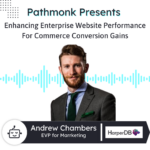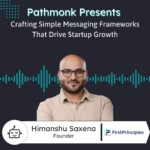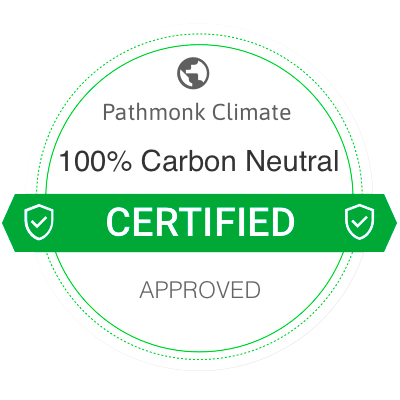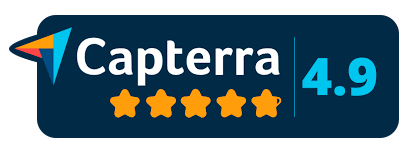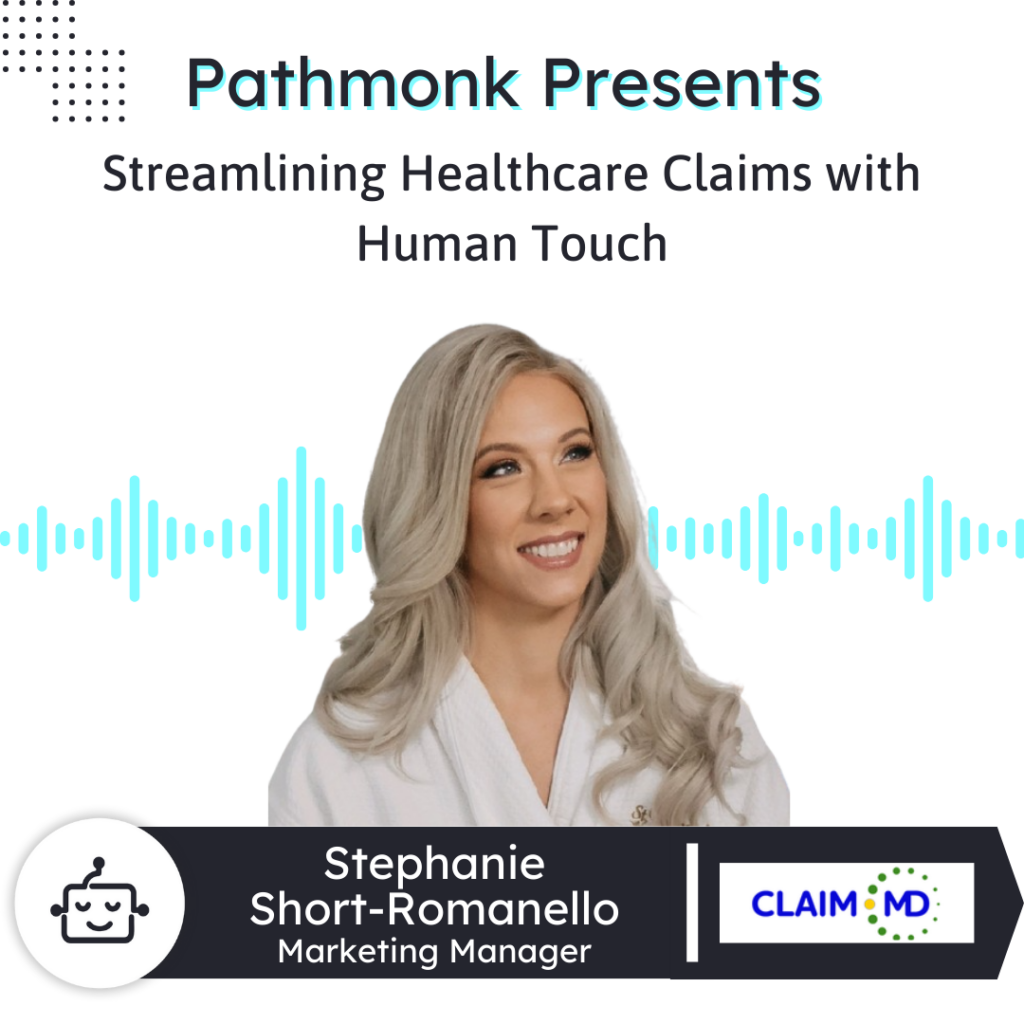
Introduction
Join Pathmonk Presents as we explore ClaimMD with Stephanie Short-Romanello, Marketing Manager at this medical claims clearinghouse.
Stephanie explains how ClaimMD acts as the vital link between providers and insurers, ensuring swift claim payments for small practices to large health systems. Discover their multi-pronged acquisition strategy using LinkedIn, Google Ads, and conferences, and the website’s role in client education with free demos.
Learn about pain points like claim delays, Stephanie’s “chunking” approach for website conversions, and the value of human support. Tune in for insights on balancing automation with authentic connections!
Increase +180%
leads
demos
sales
bookings
from your website with AI
Get more conversions from your existing website traffic delivering personalized experiences.

Kevin: Hey everybody. Welcome back to Pathmonk Presents. Pathmonk is the AI for website conversions. With increasing online competition, over 98% of website visitors don’t convert. The ability to successfully show your value proposition and support visitors in their buying journey separates you from the competition online.
Pathmonk qualifies and converts leads on your website by figuring out where they are in the buying journey and influencing them in key decision moments with relevant micro experiences like case studies, intro videos, and much more. Stay relevant to your visitors and increase conversions by 50% by adding Pathmonk to your website in seconds, letting the artificial intelligence do all the work while you keep doing marketing as usual. Check us out on Pathmonk.com.
Welcome back to another episode of Pathmonk Presents. We’re really looking forward to today’s conversation because we’ve got Stephanie, the Marketing Manager over at ClaimMD, joining us for today’s call. How are you doing today, Stephanie?
Stephanie Short-Romanello: I am wonderful, Kevin. Thank you so much for having me. I’m so excited to be here.
Kevin: Of course, we’re looking forward to chatting. Before we dive a little bit too far into the nuts and bolts of what’s going on from a marketing perspective at ClaimMD, why don’t you give our audience a bit of background about the company? In your own words, tell us about ClaimMD. What’s it all about?
Stephanie: Yeah, absolutely. So, ClaimMD is a claim clearinghouse. Ideally, we are the invisible helper when it comes to healthcare. Typically, you wouldn’t see us in your healthcare journey. We are essentially the highway between providers and insurance companies to make sure that claims get paid and keep that ecosystem going.
If you go to a doctor and they give you a bunch of things during your visit—say you had a wellness check or a cold—they mark a claim, send that off to us, and we make sure they get paid. You pay what you’re supposed to pay for your coverage, and the insurance company does their part as well.
Kevin: So that’s what you’re part of—doing a very important part of the overall process for sure. Without that, things would definitely fall apart.
Stephanie: Absolutely.
Kevin: I want to focus on marketing and growth since that’s what this conversation is all about. So, to start, tell us a little bit about the companies you’re helping or working with. I know it’s very specifically healthcare-related, and more so within the healthcare insurance area. But if I asked who are the companies that you serve and what problems are you solving for them, how would you answer that?
Stephanie: Absolutely. Essentially, who we tend to help are providers, physicians—anybody who can run a claim. We serve mom-and-pop providers, maybe two doctors in a facility, and we take care of them. We also help entire health systems.
We help medical billers and coders, too. Sometimes, if it’s a large enough group, they’ll offload billing. Hospital systems have entire billing departments, so we help streamline and expedite that. When these claims are sent out, they get paid faster so that operations continue smoothly.
We’ve seen what happens when major disruptions occur in the healthcare system. We’re here to keep things moving. We also integrate with EHRs—electronic health records. When your doctor is typing in your allergies, your weight, and so on, that data goes into a system that we may be built into on the backend.
Kevin: I’ve always been curious—like, what are you typing on there, doctor? And I never really know.
Stephanie: I always think, “He looks happy!”
Kevin: That definitely answers one of my curiosities. This moves me to question number three: it seems like your primary target audience is providers, right? Whether small offices or large group practices. How do these clients find out about you? Do you have any top acquisition channels right now? Word of mouth? SEO? How are new clients discovering you?
Stephanie: That’s a really good question. It’s a multi-pronged approach. For a while, ClaimMD was really successful with grassroots outreach and word of mouth. We’d integrate with a system, and they’d share that we’re their clearinghouse of choice, and providers might onboard with us.
Now that we’ve become more active in our marketing efforts, we do a lot on LinkedIn. Decision-makers live there, but even those not traditionally considered decision-makers—like medical billers and coders—are often the ones pushing for these choices. LinkedIn is great for finding them.
We also rely heavily on Google Ads. And conferences are another big channel. A lot of the lead-up to conferences is key—you start building relationships before even meeting people. These conferences often have newsletters and opportunities to post blogs and share your mission beforehand. After the conference, we continue nurturing those relationships.
Kevin: Interesting. In a previous role, I worked in data for big pharmaceutical companies and saw how huge these conferences could be. It seems like they’re a really helpful opportunity.
Stephanie: Absolutely. Some of them bring in 50,000 attendees and showcase every tech solution imaginable. But not every conference is the right fit. The biggest, shiniest one might not be where you’ll have real, authentic conversations.
So don’t just pick a conference based on size or budget. Explore. There are smaller summits where people sit at a table and share wisdom—no booths, just meaningful conversations. Those have been very valuable to us, and I highly recommend them.
Kevin: Well said. Okay, continuing on client acquisition—let’s flip it over to the website. Since Pathmonk is about website conversion, we like to ask our guests what they’re doing to drive conversions. Your website seemed more educational than conversion-focused. What role does it currently play?
Stephanie: That’s a great question. I’ve been in healthcare for about 10 years, in different areas, and I’ve found that many who use a clearinghouse don’t know they have one. Some physicians don’t even know they need one.
Yes, it’s technically possible to do what we do manually—but it’s time-consuming and exhausting. If you’re running a clinic or handling thousands of claims, that’s overwhelming. So our website is very focused on education.
Our call to action is to get a demo. We want people to talk with our sales team, see what ClaimMD does, and learn if we’re a fit. It could be through a webinar or one-on-one—both are free. Our website aims to educate about what a clearinghouse is, who we are, and how we help. And then it invites you to dive deeper.
Kevin: So one of the strengths is definitely the opportunity to talk to a human?
Stephanie: Absolutely. A website can feel isolating—just you and a screen with no interaction. The demo request brings back that human element.
It can also be overwhelming to search through endless links trying to find the right info. So we’re giving people the option to skip that and go directly to a conversation.
We’re also launching a new website soon—should be live within the next month. It’s a facelift to reflect our rapid growth and put a more modern face on everything we do.
Kevin: Nice. And what are some of the common pain points your sales team hears during those demos?
Stephanie: Great question. Our president and founder Rob always asks, “What is your pain?” That drives everything.
If someone doesn’t have a clearinghouse, common pain points are delays and denials. Rob started ClaimMD after hearing about a provider who did cataract surgery and waited nine months to get paid. That problem still exists today.
We solve that by scrubbing claims for errors before they’re submitted. We’ve found a good balance—not over-scrubbing, not under-scrubbing—so claims are accepted by insurers.
If someone does have a clearinghouse, the pain point is often support. With ClaimMD, support is in-house. You talk to people who use the system every day. There’s a human touch—and that makes a big difference.
Kevin: Sounds like it’s an emotional process. Getting paid, dealing with insurance… the stress is already high. You don’t want to add to that.
Stephanie: Exactly. Payments may slow down, but payday doesn’t. And we make sure providers can keep their lights on.
Kevin: Switching gears—what do you think makes a great converting website?
Stephanie: I studied psychology, and one concept I love is “chunking.” The human brain can only process so much at once. There’s often a pressure to include everything on a website. But you don’t want to overwhelm.
The goal is to give people enough info to know who you are and what you do—without flooding them. The content needs to be digestible, navigation simple, and the visual experience balanced. Don’t go overboard with animations, but also don’t be too static.
Kevin: That’s a great answer. I’ll apply chunking to my own life!
Stephanie: Don’t overwhelm yourself!
Kevin: Staying on the topic of Stephanie the marketer—what’s your day-to-day like?
Stephanie: There are daily tasks that need babysitting—like checking ads. I do that in the morning before meetings start. I optimize campaigns and go through analytics.
After that, I look for new partnership opportunities—conferences, publications, association memberships. ClaimMD is very relational, and I’m a relational person. I reach out to partners just to check in, ask about their pain points, or brainstorm content together.
Those little efforts—knocking on a door—often lead to great things.
Kevin: Couldn’t agree more. Where do you go to learn and grow?
Stephanie: Morning Brew is a favorite. It’s well-designed and easy to digest. I use LinkedIn a lot. I also like platforms like Coursera and Udemy. I was a nerd in school—I enjoy structured learning environments.
Find what works for you and make it a habit.
Kevin: I would agree. I’ve tried some of those myself, and they didn’t work for me. Maybe it’s the platform, maybe it’s the format. Usually, I’m the type of person who needs to fail at something like 20 times before finally learning it on the 21st.
Stephanie: Tenacity. That’s okay.
Kevin: Like you said—figure out what works for you. Those are awesome recommendations. Let’s move on to the final stage of the conversation. The next few questions are more rapid fire. We’re looking for short, crisp, concise answers—the first thing that comes to your mind. But if you love the question and want to expand, go for it.
I’ll start you off easy: What’s the last book you read?
Stephanie: I read two, so I’ll give you my “smart” book first and then my “fun” book.
The first one was The 15 Invaluable Laws of Growth by John Maxwell. Highly recommend it—anything leadership or personal growth-focused, John Maxwell is great.
The second was Batavia’s Graveyard—a historical book about a pirate mutiny I had never heard of. Totally wild, but also oddly relevant for lessons today. Highly recommend both.
Kevin: Pirate mutiny and self-growth. Love the range.
Stephanie: Exactly! You can marry both together—don’t be a pirate, grow.
Kevin: Okay, next one. A little more out there. If there were no boundaries in technology—you snap your fingers and anything’s possible—what’s one thing you’d fix in your marketing role today?
Stephanie: It might be a personal one, but: remarketing campaigns. Sometimes they become comical—like you look up pots and pans once, and now you’re drowning in cookware ads for weeks.
I’d love for it to be meaningful remarketing. Not because I Googled something for someone else. I want the tech to understand real intent so I’m not smothered by irrelevant ads. That would benefit both the user and the marketer. No wasted content or spend.
Kevin: Yeah, some sort of smarter system that knows what you actually care about—not just what you clicked once.
Stephanie: Yes, like, I was helping my brother find a couch—I don’t need to see every couch online for the next month. That would be amazing.
Kevin: Maybe AI is close to figuring that out—maybe not. But I’d definitely use that too.
Next: if there’s one repetitive task in your job you could automate, what would it be?
Stephanie: Reporting. I know everyone probably says that, but it’s true. Pulling metrics from different platforms, making sense of them, organizing, interpreting—it’s a lot.
Even with platforms that aggregate data, it can still be clunky. I’d love reporting that’s centralized, actionable, and easy to understand. Just meaningful insights without all the manual pulling and formatting.
Kevin: Yeah, reporting and attribution—bringing it all into one place would save so much time.
Last question. What’s one piece of advice you would give your younger self if you were starting your marketing journey today?
Stephanie: I’ve always been a perfectionist. I was an art kid—I wanted everything to be just right before I shared it.
I’d tell myself: don’t be so afraid to fail that you don’t make any moves. Ask for things. Try things. Be brave, even if it might not be perfect.
It’s not failure—it’s redirection. Just because something doesn’t work doesn’t mean you failed. It just means that approach didn’t work. So lighten up on yourself. Be bold. Try the out-of-the-box idea. Take the chance.
Kevin: I like that—take a chance.
Stephanie: Thank you. I appreciate it.
Kevin: Really well said. And with that, we’re wrapping up the call. Stephanie, thank you so much for joining today. We really enjoyed having you.
Before we sign off, why don’t you give our audience one more reminder about ClaimMD? Tell us again what you’re all about and where people can find you.
Stephanie: Thank you so much, Kevin. I really appreciate you having me. This was a blast—you were awesome.
ClaimMD is a medical claims clearinghouse. You can find us at www.claim.md. We’re also on LinkedIn, BlueSky, Threads, Instagram—pretty much all the socials. We’d love to connect and start a conversation with you, especially if you’re looking for a clearinghouse or thinking about switching.
Kevin: Thank you so much, Stephanie. We appreciate having you on. Have an awesome day.
Stephanie: Thank you, you too!




